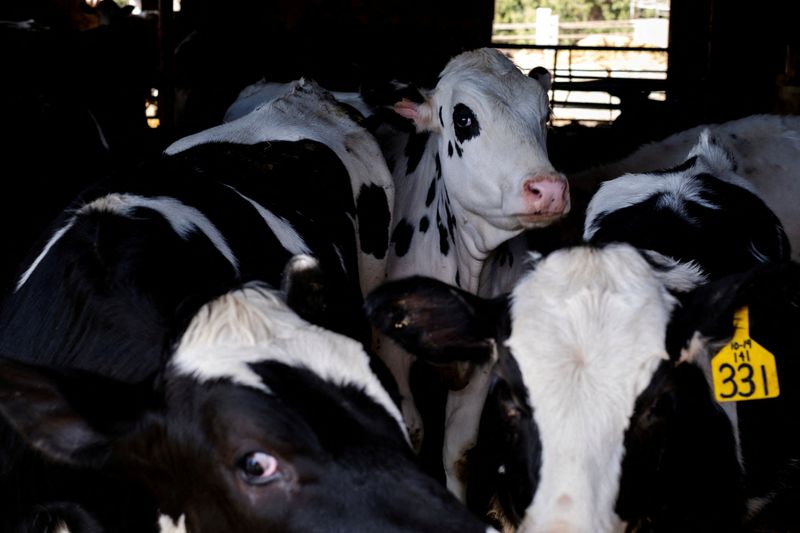By Tom Polansek
CHICAGO (Reuters) – The U.S. Department of Agriculture said this week that cow-to-cow transmission is a factor in the spread of bird flu in dairy herds, but it still does not know exactly how the virus is being moved around.
Farmers and veterinarians have been waiting for confirmation on how the virus is transmitted to better control its spread. Dairy herds in eight states tested positive over the past month, along with one dairy worker in Texas.
“Those of us that have worked with influenza for a long time were fairly quickly saying, ‘Yep it moves cow to cow,'” Jim Lowe, an associate dean at the University of Illinois College of Veterinary Medicine, said on Friday. “You can’t explain the epidemiology any other way.”
Wild migratory birds are believed to be the original source of the virus. But the USDA said its investigation into cow infections “includes some cases where the virus spread was associated with cattle movements between herds.” There is also evidence the virus spread from dairy cattle premises “back into nearby poultry premises through an unknown route,” the department said.
The USDA said cows shed the virus in milk at high concentrations, so anything that comes in contact with unpasteurized milk may spread the disease. Respiratory transmission is not considered a primary way for the virus to spread in cattle, the department added.
Despite uncertainty over transmission, USDA has not imposed quarantines to restrict the movement of cattle around infected dairies, as it does with chickens and turkeys around infected poultry farms. Infected cattle appear to recover, while bird flu is usually lethal for poultry.

The USDA said it expects that minimizing cattle movement and testing those that must be shipped, along with safety and cleaning practices on farms, should avoid the need for regulatory restrictions.
Officials reported last month that bird flu primarily affected older cows, though additional data now indicates younger cattle have been affected, the USDA said.

